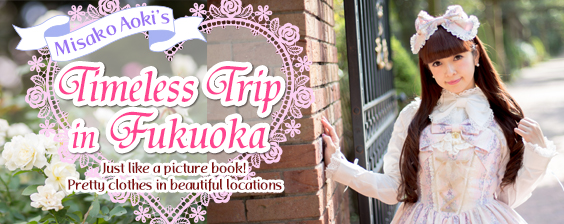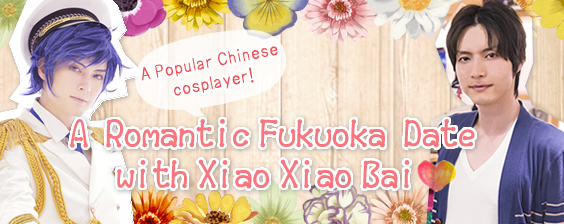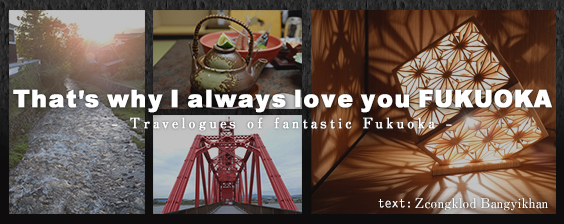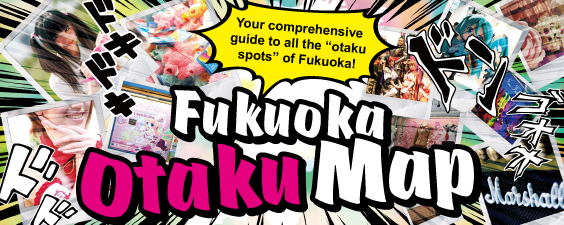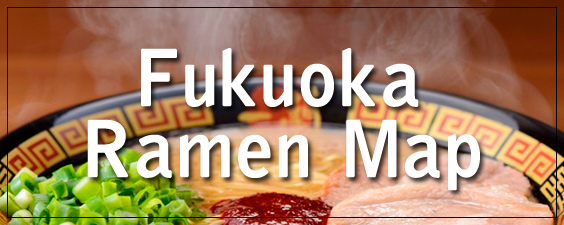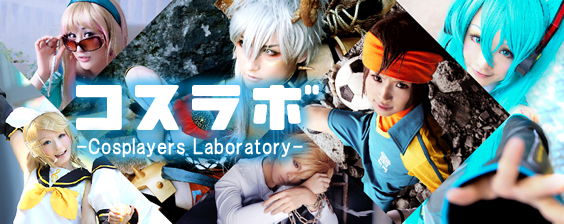- Home
- Ayaka Wada(ANGERME) presents "...
- Interview with Ayaka Wada to C...
Interview with Ayaka Wada to Celebrate the Launch of her New Book, “Rediscovering Japan Through Art” (ODYSSEY BOOKS INC.) – Ayaka Wada (ANGERME) X Takamasa Sakurai (Producer)
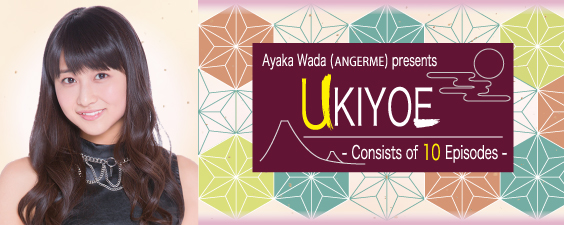
Following on from her 2014 publication that shed a fresh new light on the fine art book industry, “Otome no Kaiga Annai” (PHP Shinsho), on the 12th of March 2016, ANGERME idol group leader, Ayaka Wada, will release her second book, entitled, “Bijutsu de Meguru Nippon Saihakken - Ukiyoe, Nippon-ga kara Butsuzou made” (Rediscovering Japan Through Art: From Ukiyo-e and Japanese Paintings, to Buddhist Sculptures) (ODUSSEY BOOKS INC.).
While her previous book focused on Western paintings, the theme of her next book will be “Japan.” In the first half, Wada gives he own unique analysis of Ukiyo-e, Japanese paintings and Buddhist sculptures, and in the second half, Wada uses a collection of photos to take the reader on a pilgrimage around Tokyo and the various downtown districts that provided the settings for Japan’s ukiyo-e artworks.
The idea for this project started with the “Ukiyo-e” series published on asianbeat. The book is an extension of this series and features an array of brand new commentary as well. To celebrate the release of her new book, asianbeat is hosting this special interview between author, Ayaka Wada, and the book’s producer, Takamasa Sakurai.
While her previous book focused on Western paintings, the theme of her next book will be “Japan.” In the first half, Wada gives he own unique analysis of Ukiyo-e, Japanese paintings and Buddhist sculptures, and in the second half, Wada uses a collection of photos to take the reader on a pilgrimage around Tokyo and the various downtown districts that provided the settings for Japan’s ukiyo-e artworks.
The idea for this project started with the “Ukiyo-e” series published on asianbeat. The book is an extension of this series and features an array of brand new commentary as well. To celebrate the release of her new book, asianbeat is hosting this special interview between author, Ayaka Wada, and the book’s producer, Takamasa Sakurai.
Ukiyo-e was not “Art”
Takamasa Sakurai The idea to serialize “Ukiyo-e” on asianbeat began when we went together to do a report on the “Ukiyo-e: A Journey Through the Floating World” exhibit. It was like our eyes had suddenly opened to the world of ukiyo-e! (lol) What was your impression of ukiyo-e and Japanese art in general up until that point, though, Ayacho (Ayaka Wada)?
Ayaka Wada I always had a rather stiff impression of art in Japan. I think a lot of people probably tend to regard art as “difficult,” and that’s what I thought about Japanese art as well. There are a lot of depictions of Mt. Fuji and things that are just so common to life in Japan, so to be honest, I didn’t really think much of Japanese art at all.
Sakurai I guess it’s like always wanting to go on vacation overseas, even when there are so many amazing places here inside of Japan, no?
Wada It’s exactly like that. In saying that, though, I’ve never actually been overseas (lol). When we went to “Ukiyo-e: A Journey Through the Floating World,” I was particularly taken back by the ukiyo-e by Harunobu Suzuki. Up until that point, ukiyo-e was just a piece of paper to me. So it was a surprise to learn that the pictures are actually textured and indented.
Ayaka Wada I always had a rather stiff impression of art in Japan. I think a lot of people probably tend to regard art as “difficult,” and that’s what I thought about Japanese art as well. There are a lot of depictions of Mt. Fuji and things that are just so common to life in Japan, so to be honest, I didn’t really think much of Japanese art at all.
Sakurai I guess it’s like always wanting to go on vacation overseas, even when there are so many amazing places here inside of Japan, no?
Wada It’s exactly like that. In saying that, though, I’ve never actually been overseas (lol). When we went to “Ukiyo-e: A Journey Through the Floating World,” I was particularly taken back by the ukiyo-e by Harunobu Suzuki. Up until that point, ukiyo-e was just a piece of paper to me. So it was a surprise to learn that the pictures are actually textured and indented.
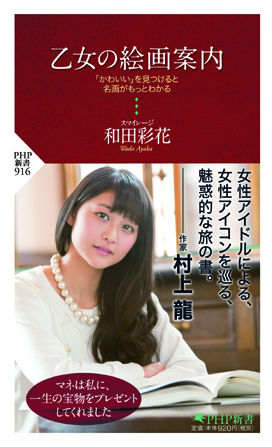
Sakurai The technical skill of Edo!
Wada The technical skill to be able to replicate the intricate detail of a kimono on a woodblock print is incredible. It made me feel like Edo of that time would have been the world’s leading artistic nation.
Sakurai But, the people of Edo back then, whether it was the people that made ukiyo-e, drew the pictures, sold the paintings or bought them, no one back then thought of ukiyo-e as art.
Wada Ukiyo-e was just “business.”
Sakurai That’s why a lot of the works at the “Ukiyo-e: A Journey Through the Floating World” exhibit belonged to overseas galleries. Ukiyo-e just flowed outside of Japan.
Wada It’s sad, really. But there’s a good aspect to it also. People overseas took good care of them. However, when Meiji became Edo, things that were important to Japanese people became lost for a period. And it’s unfortunate that even people today don’t realize all the really great things that used to be in Edo and in Japan. Japanese people have this tendency to look towards the West and think all Western things are good or cool or interesting. I find it amusing that Japan had all these incredible things in the past, and the things that people think of now as art were being made by people in Edo without such consideration at all.
Sakurai That’s so true.
Wada It would have been so much more fun if history and art text books told it that way, too.
Sakurai When Japan entered into the Meiji period and developed a concept of art, ukiyo-e disappeared for a brief time, but when they gave thought to ukiyo-e in light of this new concept of art, that’s when they started portraying and evaluating these works in a really textbook sort of way, no doubt.

Wada The technical skill to be able to replicate the intricate detail of a kimono on a woodblock print is incredible. It made me feel like Edo of that time would have been the world’s leading artistic nation.
Sakurai But, the people of Edo back then, whether it was the people that made ukiyo-e, drew the pictures, sold the paintings or bought them, no one back then thought of ukiyo-e as art.
Wada Ukiyo-e was just “business.”
Sakurai That’s why a lot of the works at the “Ukiyo-e: A Journey Through the Floating World” exhibit belonged to overseas galleries. Ukiyo-e just flowed outside of Japan.
Wada It’s sad, really. But there’s a good aspect to it also. People overseas took good care of them. However, when Meiji became Edo, things that were important to Japanese people became lost for a period. And it’s unfortunate that even people today don’t realize all the really great things that used to be in Edo and in Japan. Japanese people have this tendency to look towards the West and think all Western things are good or cool or interesting. I find it amusing that Japan had all these incredible things in the past, and the things that people think of now as art were being made by people in Edo without such consideration at all.
Sakurai That’s so true.
Wada It would have been so much more fun if history and art text books told it that way, too.
Sakurai When Japan entered into the Meiji period and developed a concept of art, ukiyo-e disappeared for a brief time, but when they gave thought to ukiyo-e in light of this new concept of art, that’s when they started portraying and evaluating these works in a really textbook sort of way, no doubt.

“Sadness” and “Joy” in Ukiyo-e
Sakurai Which artist stood out for you in your book this time around?
Wada That would have to be Kiyochika Kobayashi. From Edo to Meiji, he was an ukiyo-e artist that lived through the forgotten era of ukiyo-e. I felt a strong sense of the period of life Kiyochia lived in through his works. It was really sad looking at his works at the exhibit. I didn’t even live through Edo and it was upsetting.
Sakurai It’s not like he was painting thinking that ukiyo-e would one day be forgotten, but looking at them now, the end of ukiyo-e is depicted in the pictures. That’s what’s so interesting about paintings. The artist's personality and the historical background comes through the pictures.
I will never forget about Kunisada Utagawa and the time we went together to do a report at the Ōta Memorial Museum of Art. Not only the color in Kunisada’s paintings, but the fact that I didn’t know about such incredible art.
Wada It was sad for me also. A lot of the artists you learn about in art history didn’t receive acclaim until after they died. Artists like Van Gogh and Rousseau. But then I found out that there was the complete opposite pattern as well. Learning about all the different types of artists within the ukiyo-e scene taught me just how deep ukiyo-e really is. We have to give more recognition to Kunisada! That’s what I feel Japanese people should be doing right now.
Sakurai Kunisada was such a successful artist but he painted so many different types of ukiyo-e that there’s probably not a particular work that you can say, ‘This is a Kunisada!’
Wada He made too many things.
Sakurai I guess he was too much of a superstar…
Wada It’s sad really.
It’s also sad that in regards to ukiyo-e in general, a lot of people see it as somewhat “shibui” (old school) and don’t even take any notice of it. I want to keep trying to spread the word about how fascinating ukiyo-e is. When I talk about it in simple terms, even some of the other ANGERME members seem a bit interested.
Sakurai Like talking about the Edo “idols” that are portrayed in the pictures, right? You might get more people interested if you tell them there are tons of hints in ukiyo-e pictures about how to become a more successful idol (lol).
Wada The gestures of the people depicted in the ukiyo-e are really cute, too.
Sakurai Like playing with cats for example.
Wada It’s just like me an Tora-chan (pet cat). Until I really got into ukiyo-e, I thought people in Edo were just wearing kimono and kneeling on the floor all the time. But they were just like us today, and it’s fun to see that in the pictures and see that normal, human side to them.
Sakurai They were into fashion.
Wada And they did their makeup.

Field report at the Mitsubishi Ichigokan Museum.
Wada That would have to be Kiyochika Kobayashi. From Edo to Meiji, he was an ukiyo-e artist that lived through the forgotten era of ukiyo-e. I felt a strong sense of the period of life Kiyochia lived in through his works. It was really sad looking at his works at the exhibit. I didn’t even live through Edo and it was upsetting.
Sakurai It’s not like he was painting thinking that ukiyo-e would one day be forgotten, but looking at them now, the end of ukiyo-e is depicted in the pictures. That’s what’s so interesting about paintings. The artist's personality and the historical background comes through the pictures.
I will never forget about Kunisada Utagawa and the time we went together to do a report at the Ōta Memorial Museum of Art. Not only the color in Kunisada’s paintings, but the fact that I didn’t know about such incredible art.
Wada It was sad for me also. A lot of the artists you learn about in art history didn’t receive acclaim until after they died. Artists like Van Gogh and Rousseau. But then I found out that there was the complete opposite pattern as well. Learning about all the different types of artists within the ukiyo-e scene taught me just how deep ukiyo-e really is. We have to give more recognition to Kunisada! That’s what I feel Japanese people should be doing right now.
Sakurai Kunisada was such a successful artist but he painted so many different types of ukiyo-e that there’s probably not a particular work that you can say, ‘This is a Kunisada!’
Wada He made too many things.
Sakurai I guess he was too much of a superstar…
Wada It’s sad really.
It’s also sad that in regards to ukiyo-e in general, a lot of people see it as somewhat “shibui” (old school) and don’t even take any notice of it. I want to keep trying to spread the word about how fascinating ukiyo-e is. When I talk about it in simple terms, even some of the other ANGERME members seem a bit interested.
Sakurai Like talking about the Edo “idols” that are portrayed in the pictures, right? You might get more people interested if you tell them there are tons of hints in ukiyo-e pictures about how to become a more successful idol (lol).
Wada The gestures of the people depicted in the ukiyo-e are really cute, too.
Sakurai Like playing with cats for example.
Wada It’s just like me an Tora-chan (pet cat). Until I really got into ukiyo-e, I thought people in Edo were just wearing kimono and kneeling on the floor all the time. But they were just like us today, and it’s fun to see that in the pictures and see that normal, human side to them.
Sakurai They were into fashion.
Wada And they did their makeup.

I Recommend a “Ukiyo-e Pilgrimage”
Sakurai What was it like having your photo taken in a situation that would’ve been portrayed in the works by artists like Kunisada Utagawa or Kiyonaga Torii?
Wada I was so excited to stand in the same spot as the scenes in various ukiyo-e. I stood there and thought, ‘I wonder if the ukiyo-e artists are watching me now?’ Inisde I was telling them, “I’m here now.”
Sakurai Do you have a favorite spot?
Wada I like the area around the Sumida River. The Sumida River (then called Ookawa) appears in a lot of ukiyo-e, but I had never been until now, so it was one place that really stood out for me. Also, Mimeguri Shrine – the tori gate that appears in the ukiyo-e is still there today, so it was a good feeling to think that we were looking at the same object.
Sakurai It’s fun to look around for all the remnants of Edo that still exist in Tokyo today.
Wada I highly recommend a “ukiyo-e pilgrimage.” It would make me happy if people went searching for the places that I stood in the photos in my book, too.
Sakurai You met a whole lot of foreign tourists in Asakusa as well, right?
Wada It was great that they were all so excited just because they saw me in a yukata.
Wada I was so excited to stand in the same spot as the scenes in various ukiyo-e. I stood there and thought, ‘I wonder if the ukiyo-e artists are watching me now?’ Inisde I was telling them, “I’m here now.”
Sakurai Do you have a favorite spot?
Wada I like the area around the Sumida River. The Sumida River (then called Ookawa) appears in a lot of ukiyo-e, but I had never been until now, so it was one place that really stood out for me. Also, Mimeguri Shrine – the tori gate that appears in the ukiyo-e is still there today, so it was a good feeling to think that we were looking at the same object.
Sakurai It’s fun to look around for all the remnants of Edo that still exist in Tokyo today.
Wada I highly recommend a “ukiyo-e pilgrimage.” It would make me happy if people went searching for the places that I stood in the photos in my book, too.
Sakurai You met a whole lot of foreign tourists in Asakusa as well, right?
Wada It was great that they were all so excited just because they saw me in a yukata.




I Want to Become a Curator!
Sakurai You also introduce a lot of non-ukiyo-e artists this time around, too, don’t you? Like Yumeji Takehisa.
Wada Yumeji has always been a favorite artist of mine, so it was great to call the “Takehisa Yumeji Musuem” and learn a lot more about him.
Sakurai You really do learn a lot when you speak to curators.
Wada With everyday that goes by, I want to become a curator even more. I have to really knuckle down and study, too!
Sakurai It reminded me of how interesting the Rimpa school (of painting) is as well.
Wada The Rimpa school is usually categorized in the one category, but if you really think about it, the leading artists in this school like Sōtatsu Tawaraya, Kōrin Ogata, and Hōitsu Sakai, never actually had anything to do with each other. Encounters across space and time are a beautiful thing.
Sakurai If there was anything that we could contribute to the art world, I think it would be to point out the obvious things in the art world that the specialists don’t write about and try to tell people, if you look here or if you notice these things here, you might find it a lot more interesting.
Going by the comments from your fans on you blog, everyone seems to be really excited about how your next book will turn out.
Wada All of a sudden, everyone seems to be going along to various exhibits in Japan. It makes me happy that all these people are honestly excited about visiting art galleries.
Wada Yumeji has always been a favorite artist of mine, so it was great to call the “Takehisa Yumeji Musuem” and learn a lot more about him.
Sakurai You really do learn a lot when you speak to curators.
Wada With everyday that goes by, I want to become a curator even more. I have to really knuckle down and study, too!
Sakurai It reminded me of how interesting the Rimpa school (of painting) is as well.
Wada The Rimpa school is usually categorized in the one category, but if you really think about it, the leading artists in this school like Sōtatsu Tawaraya, Kōrin Ogata, and Hōitsu Sakai, never actually had anything to do with each other. Encounters across space and time are a beautiful thing.
Sakurai If there was anything that we could contribute to the art world, I think it would be to point out the obvious things in the art world that the specialists don’t write about and try to tell people, if you look here or if you notice these things here, you might find it a lot more interesting.
Going by the comments from your fans on you blog, everyone seems to be really excited about how your next book will turn out.
Wada All of a sudden, everyone seems to be going along to various exhibits in Japan. It makes me happy that all these people are honestly excited about visiting art galleries.








The French Dream
Sakurai What do you want to do with Japanese art from here on?
Wada I became a fan of Western art after discovering Manet, but I don’t want to forget the fact that we have such great art here in Japan either. Japan has become so much more important to me now, and even if I continue to pursue my study of Western art further, my feelings towards Japan won’t change.
Sakurai The Japonism movement was a grateful thing for Japan.
Wada It reminded me how interesting a country Japan is.
Sakurai I think we’re the most unique country in the world.
Wada That’s why everyone watches us.
Sakurai Japanese people might see Kyoto and Nara and Edo and think of them as “shibui” (old school), but places like Shibuya and Harajuku are thought of as different all together. But for people from overseas, they see Shibuya and Nara and think of them as part of the one unique entity – something only found in Japan. Foreigners see the Shibuya crossing and think of it as a completely unique sight, but going to see the temples in Nara is just the same.
I would love to put out this book in France.
Wada Definitely!
Sakurai I want to hear all the French fans of ANGERME to scream out to you in French. I hope this book reaches the publishers in France.
Wada That would be great (lol).
Sakurai I would like to hold a talk with the international fans of ANGERME living in Japan as well.
If you were to release a French version of your book, you might finally get the chance to go overseas and visit France, too.
Wada Ah! But I’m writing about ukiyo-e, and if I went to France, I would probably spend my whole time inside the Musée d'Orsay (lol).
Sakurai Well if it wasn’t for ukiyo-e, the impressionist movement probably never would have happened, so I think it would be okay if that’s what you wanted to do (lol). As a mark of respect, you did write about Van Gogh and Monet in your book about Japanese paintings, after all.
Wada I’m sure Van Gogh would be happy being in this book, surrounded by Japan.
Wada I became a fan of Western art after discovering Manet, but I don’t want to forget the fact that we have such great art here in Japan either. Japan has become so much more important to me now, and even if I continue to pursue my study of Western art further, my feelings towards Japan won’t change.
Sakurai The Japonism movement was a grateful thing for Japan.
Wada It reminded me how interesting a country Japan is.
Sakurai I think we’re the most unique country in the world.
Wada That’s why everyone watches us.
Sakurai Japanese people might see Kyoto and Nara and Edo and think of them as “shibui” (old school), but places like Shibuya and Harajuku are thought of as different all together. But for people from overseas, they see Shibuya and Nara and think of them as part of the one unique entity – something only found in Japan. Foreigners see the Shibuya crossing and think of it as a completely unique sight, but going to see the temples in Nara is just the same.
I would love to put out this book in France.
Wada Definitely!
Sakurai I want to hear all the French fans of ANGERME to scream out to you in French. I hope this book reaches the publishers in France.
Wada That would be great (lol).
Sakurai I would like to hold a talk with the international fans of ANGERME living in Japan as well.
If you were to release a French version of your book, you might finally get the chance to go overseas and visit France, too.
Wada Ah! But I’m writing about ukiyo-e, and if I went to France, I would probably spend my whole time inside the Musée d'Orsay (lol).
Sakurai Well if it wasn’t for ukiyo-e, the impressionist movement probably never would have happened, so I think it would be okay if that’s what you wanted to do (lol). As a mark of respect, you did write about Van Gogh and Monet in your book about Japanese paintings, after all.
Wada I’m sure Van Gogh would be happy being in this book, surrounded by Japan.

Interview premises provided by: Digital Hollywood University
Information
To mark the release of her new book "Bijyutu de Meguru Nihon Saihakken - Ukiyoe, Nihon-ga kara Butsuzou made - (lit. Rediscovering Japan Through Art: From Ukiyo-e and Japanese Paintings, to Buddhist Sculptures," Ayaka Wada sat down with the producer of the series Takamasa Sakurai, who has sadly since passed away, for a special interview entitled “Rediscovering Japan Through Art” (ODYSSEY BOOKS INC.) – Ayaka Wada (ANGERME) X Takamasa Sakurai (Producer)."
With the blessing of Ayaka Wada and the bereaved family, we took the decision to proceed with the posting of this interview as a means of honoring the memory of Takamasa Sakurai.
With the blessing of Ayaka Wada and the bereaved family, we took the decision to proceed with the posting of this interview as a means of honoring the memory of Takamasa Sakurai.
In Memory of Takamasa Sakurai: A Message from Ayaka Wada
I published my second book on art, called "Rediscovering Japan Through Art: From Ukiyo-e and Japanese Paintings, to Buddhist Sculptures," which brought together and summarized the information from our asianbeat series on ukiyo-e.
I created this book together with Takamasa Sakurai, who was the producer of the series.
Sakurai-san passed away just as we were coming to completing the book.
He used to say to me "this book will help you out in the future!" And it's this book that Sakurai-san has left behind for me.
With this book please to continue our journey through art.
I feel like this is what he is saying to me.
And that is why I really hope that with this book we can all rediscover Japan through art.
Sakurai-san, please keep an eye over us.
Ayaka Wada (ANGERME)
I created this book together with Takamasa Sakurai, who was the producer of the series.
Sakurai-san passed away just as we were coming to completing the book.
He used to say to me "this book will help you out in the future!" And it's this book that Sakurai-san has left behind for me.
With this book please to continue our journey through art.
I feel like this is what he is saying to me.
And that is why I really hope that with this book we can all rediscover Japan through art.
Sakurai-san, please keep an eye over us.
Ayaka Wada (ANGERME)
Rediscovering Japan Through Art: From Ukiyo-e and Japanese Paintings, to Buddhist Sculptures
 Ayaka Wada's second art-related book "Rediscovering Japan Through Art: From Ukiyo-e and Japanese Paintings, to Buddhist Sculptures" is now on sale!
Ayaka Wada's second art-related book "Rediscovering Japan Through Art: From Ukiyo-e and Japanese Paintings, to Buddhist Sculptures" is now on sale! Following on from her first art book "Otome no Kaiga Annai (Maiden's Guide to Paintings)," which was published by PHP SHINSHO, Ayaka Wada's second book is now available for purchase.
"Ukiyo-e was not art!"... Starting from this viewpoint, Wada explores not only ukiyo-e, but also Nihon-ga (Japanese-style paintings), Youga (Western-style paintings) and Butsuzou (Buddhist imagery), all from her perspective and invites us to join in on this journey to rediscover Japan!
There's all kinds of works featured, including Katsushika Hokusai's "Mishima Pass in Kai Province" from his famous series the "Thirty-six Views of Mount Fuji," Kitagawa Utamaro's "Young Lady Blowing on a Poppin," Claude Monet's "La Japonaise" and Utagawa Hiroshige "Shono Haku (Shono's White Rain)" from his noted group of works "The Fifty-three Stations of the Tokaido, Evening Squall at Shono," as well as a collection of photographgravure images in a series entitled "Wada Ayaka no Ukiyo-e Seichi-junrei (Ayako Wadas Ukiyo-e Pilgrimage)!"
- Book Information:
Ayaka Wada, "Bijyutu de Meguru Nihon Saihakken - Ukiyoe, Nihon-ga kara Butsuzou made - (lit. Rediscovering Japan Through Art: From Ukiyo-e and Japanese Paintings, to Buddhist Sculptures)" (ODYSSEY BOOKS INC.) Price: 1,667 yen (tax not included)
Related Articles
 Ayaka Wada(ANGERME) presents "Ukiyo-e" Vol.01 Harunobu Suzuki "Couple Under Umbrella in the Snow"
Ayaka Wada(ANGERME) presents "Ukiyo-e" Vol.01 Harunobu Suzuki "Couple Under Umbrella in the Snow"Harunobu Suzuki was the first superstar of the ukiyo-e technique known as nishiki-e. Nishiki-e developed through advances in polychrome woodblock printing techniques and is a style of ukiyo-e that layers multiple colors on top of each other.
 Ayaka Wada(ANGERME) presents "Ukiyo-e" Vol.05 Toshusai Sharaku "Actor Otani Oniji 3rd as the yakko Edobei"
Ayaka Wada(ANGERME) presents "Ukiyo-e" Vol.05 Toshusai Sharaku "Actor Otani Oniji 3rd as the yakko Edobei"Have you ever looked over a painting by a famous artist on display at an art gallery or art exhibition and found yourself wondering this? Do we look at these paintings with such appreciation because the artist is famous and has received praise from people around the world? Famous paintings are famous because society and all the textbooks and guidebooks tell us so.
 Ayaka Wada (ANGERME) presents "Ukiyo-e" Vol.10 Eizan Kikugawa "Fashionable Decorations for the Five Seasonal Festivals: Iris Festival"
Ayaka Wada (ANGERME) presents "Ukiyo-e" Vol.10 Eizan Kikugawa "Fashionable Decorations for the Five Seasonal Festivals: Iris Festival"After almost a year of its serialization, we’ve now reached the final installment in the “Ukiyo-e” series. I’ve seen all various kinds of ukiyo-e prints over this year, and for me, Edo has become a period in history that I can now really relate to.
 Interview with Ayaka Wada to Celebrate the Launch of her New Book, “Rediscovering Japan Through Art” (ODYSSEY BOOKS INC.) – Ayaka Wada (ANGERME) X Takamasa Sakurai (Producer)
Interview with Ayaka Wada to Celebrate the Launch of her New Book, “Rediscovering Japan Through Art” (ODYSSEY BOOKS INC.) – Ayaka Wada (ANGERME) X Takamasa Sakurai (Producer)Following on from her 2014 publication that shed a fresh new light on the fine art book industry, “Otome no Kaiga Annai” (PHP Shinsho), on the 12th of March 2016, ANGERME idol group leader, Ayaka Wada, will release her second book, entitled, “Bijutsu de Meguru Nippon Saihakken ~ Ukiyoe, Nippon-ga kara Butsuzou made” (Rediscovering Japan Through Art: From Ukiyo-e and Japanese Paintings, to Buddhist Sculptures) (ODUSSEY BOOKS INC.).
Columnist: Ayaka Wada (ANGERME)
Born on August 1st 1994 in Gunma Prefecture.
Leader of Hello! Project idol group "ANGERME"
Passed the "Hello! Pro Egg Auditions 2004" and became a Hello! Pro Egg member.
Major debut was on the 2010 "Yume Miru 15 (Dreaming fifteen-Year-Old)."
Awarded the "Saiyushu Shinjinsho (Best New Artist Award)" at the "Dai 52 Kai Kagayaku! Nihon Record Taisho (52nd Japan Record Awards)" in that same year.
Under the name of ANGERME, they had a fresh start and have been performing since January 2015.
Currently active in various forms of media, such as TV, magazines, stage, as well as live performances.
Majoring in art history at university and with a keen interest in paintings has written a series for Kyodo News called "Art Mileage," which explores museums.
Has recently been actively speaking about issues relating to Japanese Buddhist imagery and paintings.
ANGERME, Hello! Project official site: http://www.helloproject.com/angerme/
Leader of Hello! Project idol group "ANGERME"
Passed the "Hello! Pro Egg Auditions 2004" and became a Hello! Pro Egg member.
Major debut was on the 2010 "Yume Miru 15 (Dreaming fifteen-Year-Old)."
Awarded the "Saiyushu Shinjinsho (Best New Artist Award)" at the "Dai 52 Kai Kagayaku! Nihon Record Taisho (52nd Japan Record Awards)" in that same year.
Under the name of ANGERME, they had a fresh start and have been performing since January 2015.
Currently active in various forms of media, such as TV, magazines, stage, as well as live performances.
Majoring in art history at university and with a keen interest in paintings has written a series for Kyodo News called "Art Mileage," which explores museums.
Has recently been actively speaking about issues relating to Japanese Buddhist imagery and paintings.
ANGERME, Hello! Project official site: http://www.helloproject.com/angerme/
Columnist: Sakurai Takamasa
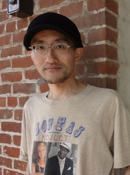 Contents Media Producer, author, journalist, specially-appointed professor of Digital Hollywood University, Digital Hollywood University graduate school, Sakurai Takamasa is a cultural diplomat who produces events and gives lectures in 140 cities in 25 countries. He acts as a cultural diplomat pioneer with anime and Harajuku Fashion. He is frequently invited as a guest to various Japanese events held worldwide. Having written several books including: "Nihon ga Suki sugiru Chugokujin Joshi" (PHP Shinsho), "Sekai Kawaii Kakumei" (PHP Shinsho), "Anime Bunka Gaiko "(Chikuma Shinsho), he is a radio personality who also regularly writes columns for various newspapers, magazines and web magazines.
Contents Media Producer, author, journalist, specially-appointed professor of Digital Hollywood University, Digital Hollywood University graduate school, Sakurai Takamasa is a cultural diplomat who produces events and gives lectures in 140 cities in 25 countries. He acts as a cultural diplomat pioneer with anime and Harajuku Fashion. He is frequently invited as a guest to various Japanese events held worldwide. Having written several books including: "Nihon ga Suki sugiru Chugokujin Joshi" (PHP Shinsho), "Sekai Kawaii Kakumei" (PHP Shinsho), "Anime Bunka Gaiko "(Chikuma Shinsho), he is a radio personality who also regularly writes columns for various newspapers, magazines and web magazines.-twitter http://twitter.com/sakuraitakamasa/
This comment section is for readers to leave opinions and comments. Inappropriate comments may be deleted, so please remember to be respectful. Thank you!
 Measures and provisions are being taken at various locations in an effort to prevent the spread of the new coronavirus.
Measures and provisions are being taken at various locations in an effort to prevent the spread of the new coronavirus.




